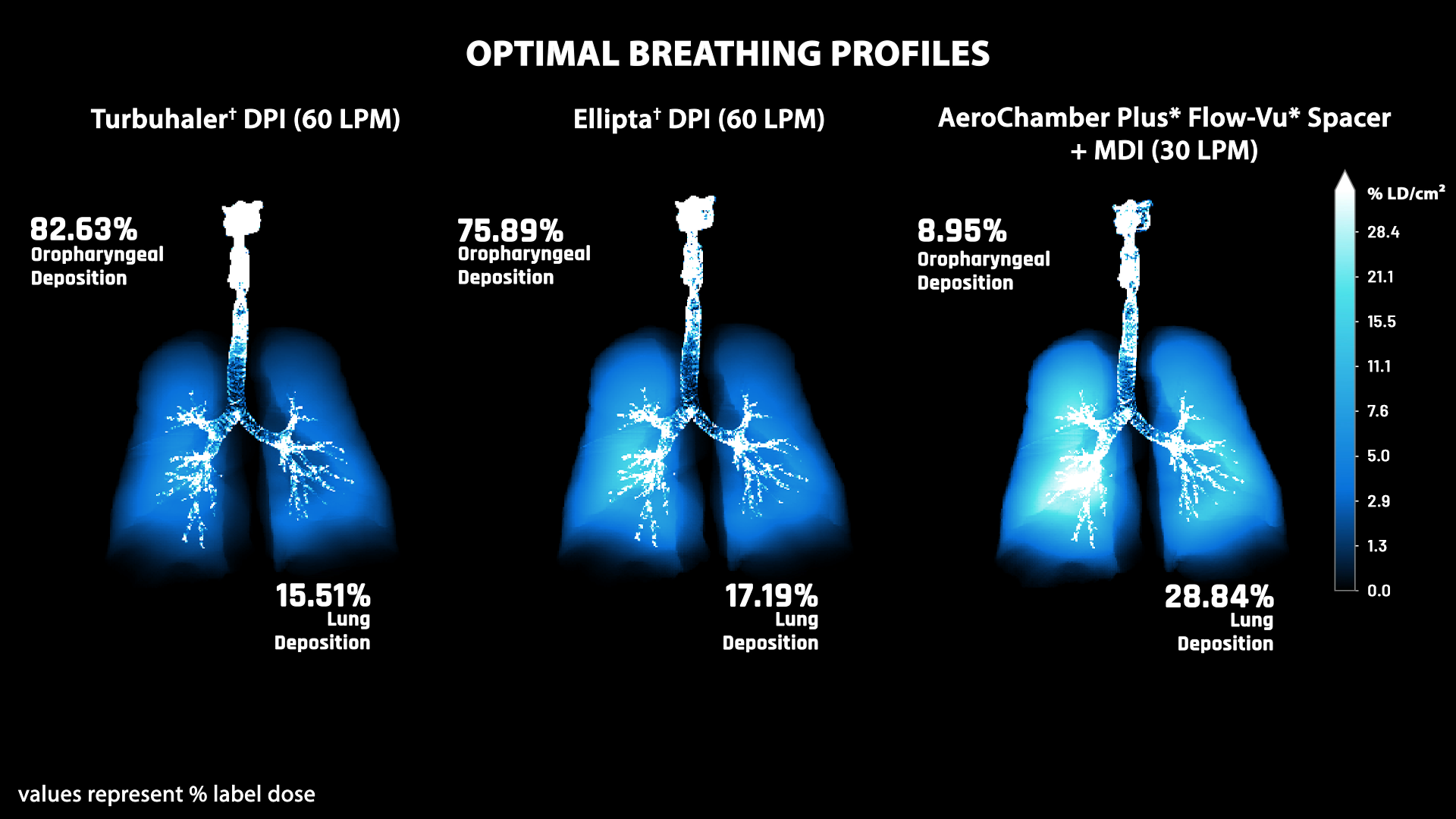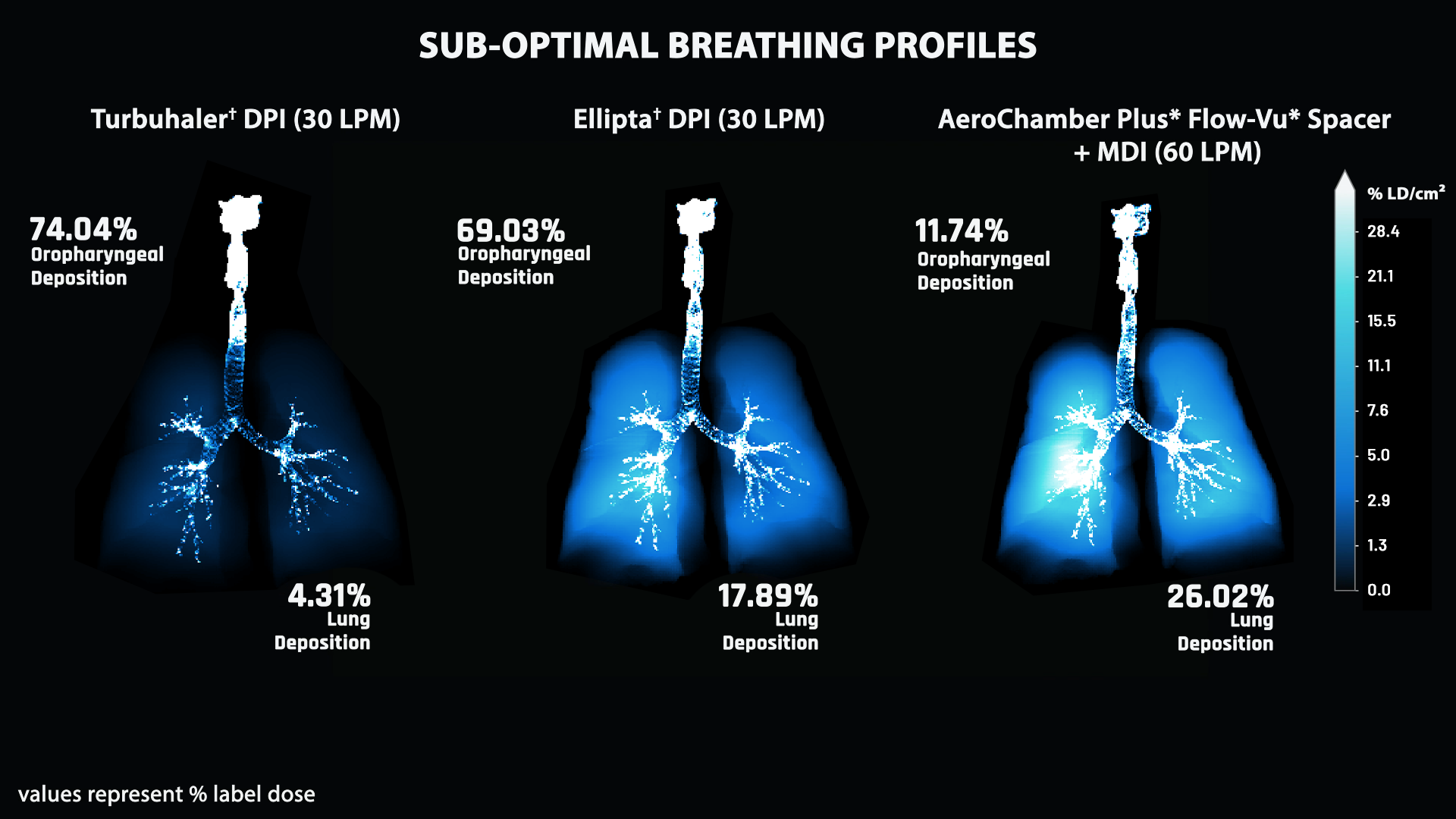Dry Powder Inhalers (DPIs) vs Metered Dose Inhaler (MDI) with Valved Spacer : Using Functional Respiratory Imaging (FRI) to Assess Modelled Lung Deposition in a COPD patient
RATIONALE
This FRI based study assessed the modelled airway drug delivery from an MDI/spacer system and two DPI systems at optimal and sub optimal flow rates.
Three-dimensional geometries of airways and lobes were extracted from a CT scan of a 67 year old male COPD (Gold III) patient.
Device Tested
The aerodynamic particle size distribution (APSD) profiles and delivered doses were obtained from published data.
Inhalation flow rates of 30 L/min (optimum for MDI/VHC, sub optimal for 2 DPIs) and 60 L/min (optimum for 2 DPIs, sub optimal for MDI/VHC) were assessed.
RESULTS
Expressed as a percentage of labelled metered doses (average values used when more than one drug in combination)
 |
 |
Modelled Lung Deposition (average values used when more than one drug in combination)
- The FRI deposition profiles highlight that the MDI/AeroChamber Plus* Flow-Vu* VHC delivered a significantly greater percentage of drug to the lung region than either of the two DPIs, irrespective of flow rate.
- This was reflected in much higher modelled oropharyngeal deposition for the two DPIs.
- The influence of inhalation flow profile was significant for one of the DPIs.
Dry Powder Inhalers (DPIs) vs Metered Dose Inhaler (MDI) with Valved Spacer - Digital Poster
European Respiratory Society International Congress September 4-6, 2022
  |